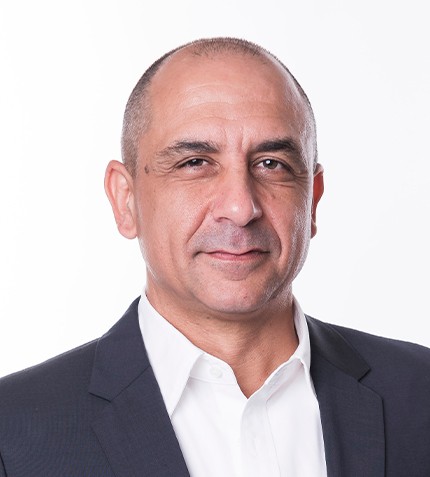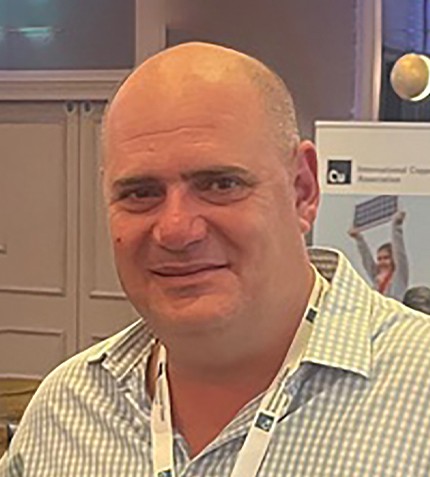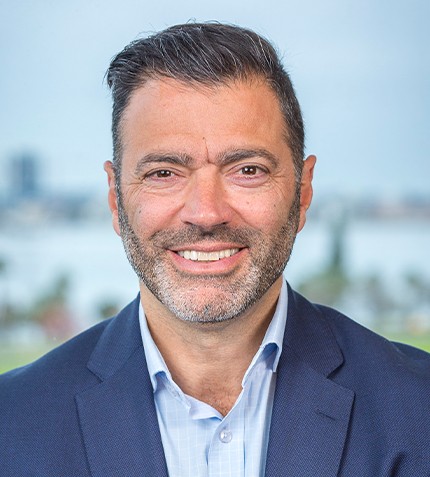
"We have developed a model to enhance the efficiency of the exploration process by locating mineral deposits with greater precision and speed."
Elly Perets
CEO, ASTERRA
Can you introduce us to ASTERRA and the technology that you use?
ASTERRA has been operating since 2016 with a core mission of assisting society in gaining a deeper understanding of the earth, particularly from a ground engineering perspective, utilizing Earth Observation techniques, specifically through Synthetic Aperture Radar (SAR) wavelengths.
In ASTERRA, we employ the L band wavelength, which spans from 20 to 30 cm, making it relatively long compared to other wavelengths. The L band wavelength actively interacts with the ground and penetrates it, providing information about surface and subsurface conditions by being sensitive to electromagnetic objects. 85% of failures start with issues related to drainage, water, moisture, and other water-related problems. Thus, this technology can identify potential leaks in water distribution networks, which typically stem from aging infrastructure. This led to the development of a model that could provide water utilities with data regarding the location of leaks, helping them tackle operational challenges like in the mining industry, where attention is directed toward monitoring tailings storage facilities.
What is EarthWorks, and what does it prevent?
When it comes to tailings facilities, it is not uncommon to observe that some tailings extend beyond the boundaries of the dam owner's property. This situation presents a significant risk, especially from a liability perspective. EarthWorks is a solution designed to support risk and disaster prevention by analyzing underground soil moisture. We can assess these risks by remotely measuring soil moisture data on dams from space. This information is crucial for understanding how pressure and moisture contribute to the movement of tailings through the dam and soil from one side to the other, providing an early indication of potential risks.
What other solutions do you have for the mining industry?
We have developed a model to enhance the efficiency of the exploration process by locating mineral deposits with greater precision and speed. We initially tested this technology in the lithium sector in the US market. Instead of collecting multiple samples over several years, we have streamlined the process into a much shorter time frame, eliminating the need for many samples. This approach allows us to validate satellite findings, swiftly resulting in significant advantages. For instance, it helps reduce carbon emissions, expedites the claim process for vast areas, and prevents the unintended use of land for alternative purposes. Additionally, it is especially beneficial in regions such as Nevada and Utah, where we want to minimize the use of heavy machinery, reduce travel, and optimize mining equipment use during exploration. We aim to expand this technology to commodities like precious metals and copper.
What are the benefits of Earth Observation techniques compared to ground monitoring techniques?
Ground monitoring techniques are often highly localized, offering limited scope. Visual inspections or sensor data can provide information only about the specific area where they are applied, potentially missing significant events occurring just a few centimeters away. In contrast, Earth Observation provides a much broader perspective, enabling the monitoring of larger regions.
One example is InSAR (Interferometric Synthetic Aperture Radar), which employs X-band wavelengths to capture multiple images over time for ground deformation monitoring. While this method yields valuable insights, it can become costlier and riskier when multiple images are required, as the earth is constantly in motion. ASTERRA’s technology, on the other hand, is built on pulsar polarization and stands out because, unlike other methods that require 10 to 15 flyovers, taking several months, our approach relies on just a single flyover. This method reduces costs and detects phenomena before they escalate into significant issues, aligning with a proactive and efficient strategy for prevention.
What would you like to have achieved over the next 12 months?
With EarthWorks, we are exploring diverse markets and applications on a global scale, such as engaging with the world’s major mining companies in Chile, Argentina, the USA, Canada, and Australia. However, penetrating these markets is not straightforward due to their highly fragmented nature, with each operation often functioning as an independent entity and employing its methods for measuring and managing risks. Moreover, mining tends to be somewhat traditional, characterized by the lengthy process of adopting new technologies. These factors have prompted us to consider the insurance market as a potential driver for solutions, as our technology can play a pivotal role in enhancing risk management.










